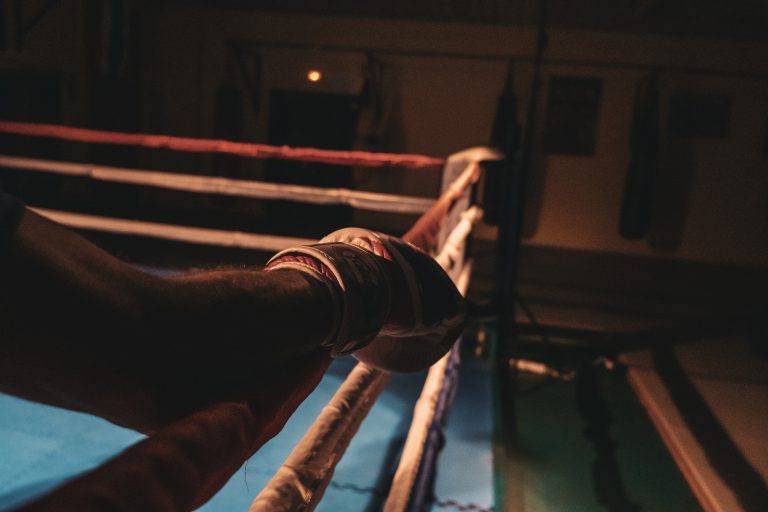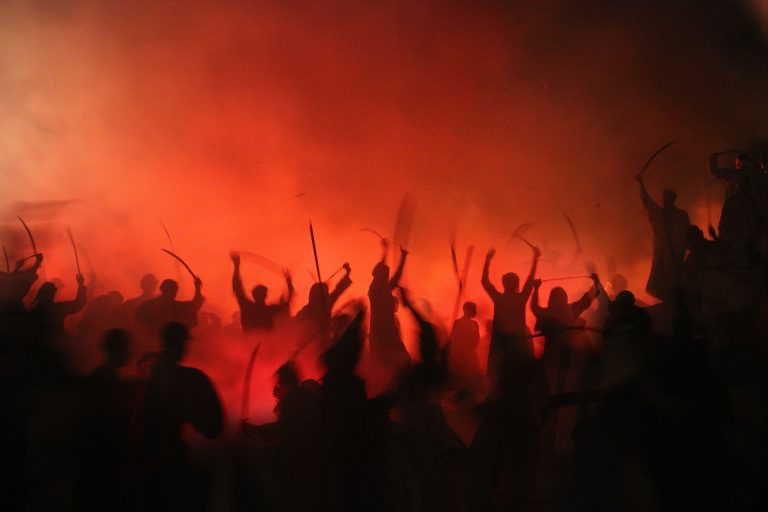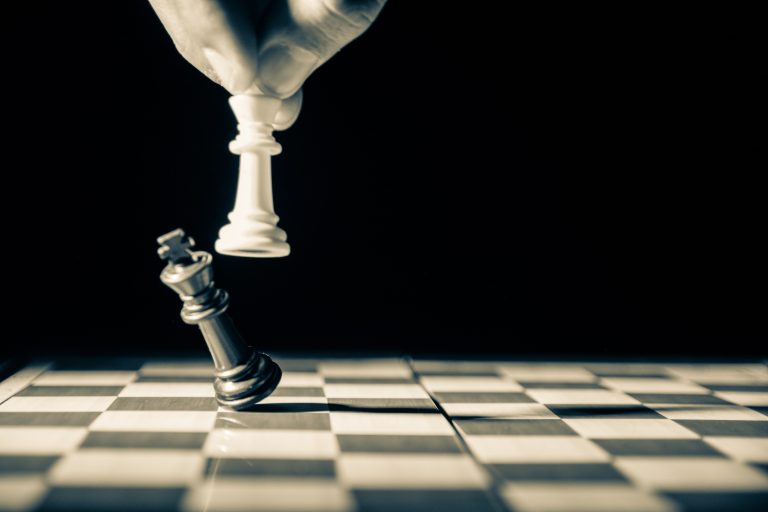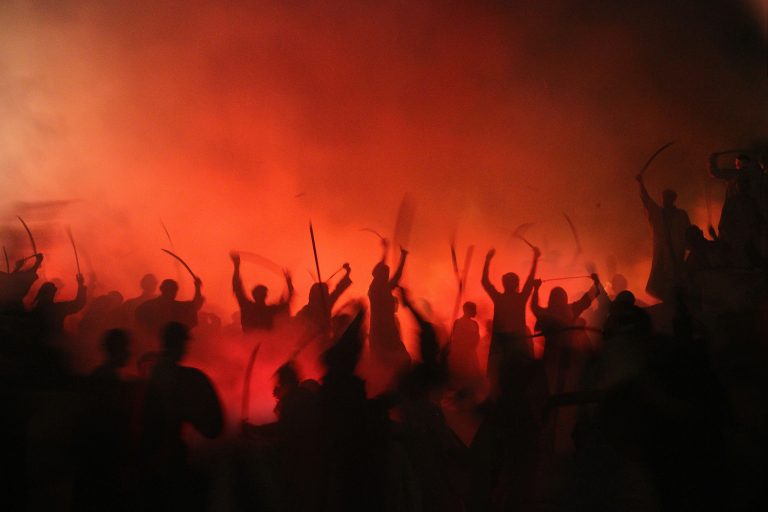Karate Word Meaning in English
Karate is a martial art that originated in the Ryukyu Kingdom, which is now known as Okinawa, Japan. It is a form of unarmed combat that is based on using striking techniques such as punches, kicks, and knee strikes, as well as open-handed techniques like knife-hands and palm strikes. Karate has gained popularity all over the world due to its focus on self-defense, physical fitness, and mental discipline.
The word “karate” is made up of two Japanese characters: kara and te. The first character, kara, means “empty,” and the second character, te, means “hand.” So, the literal meaning of karate is “empty hand.” This refers to the fact that karate is mainly a form of unarmed combat that does not involve any weapons.
However, the meaning of karate is not only limited to the literal translation of “empty hand.” The word karate has a deeper meaning that is closely tied to the spiritual and philosophical aspects of the martial art.
The Spiritual and Philosophical Meaning of Karate
Karate is not just a physical workout, it’s also a way of life. Karate masters and practitioners understand that the martial art is not just about winning fights, but it’s also about developing values such as self-control, discipline, and respect.
The deeper meaning of karate lies in the concept of “karate-do,” which means “the way of karate.” Karate-do is a philosophy that emphasizes the importance of developing a strong mind and spirit, as well as a strong body. It requires karate practitioners to be humble, respectful, and disciplined, not only in the dojo but also in their daily lives.
The History of Karate
The history of karate dates back to the 14th century, in the Ryukyu Kingdom, which is now known as Okinawa, Japan. At that time, Okinawa was a small island that was located between China and Japan. Due to its strategic location, Okinawa became a center of trade, and as a result, it was exposed to many different cultures and fighting styles.
One of the most influential fighting styles of that time was called “te,” which means “hand” in Okinawan. Te was a form of unarmed combat that was used by the Okinawan people to protect themselves from bandits and other invaders.
Over time, te evolved into karate, which became more widespread during the early 20th century when many Okinawan masters began to teach the martial art in mainland Japan. Today, karate is practiced all over the world, and there are many different styles and organizations that teach the martial art.
The Benefits of Practicing Karate
Karate has many physical, mental, and emotional benefits for its practitioners. Here are some of the most important benefits of practicing karate:
Physical Fitness
Karate is an excellent form of exercise that can help practitioners improve their strength, speed, and agility. It is a full-body workout that challenges both the aerobic and anaerobic systems of the body.
Self-Defense
Karate teaches practitioners how to defend themselves in real-life situations. It includes techniques for dealing with both armed and unarmed attackers, as well as strategies for avoiding dangerous situations altogether.
Mental Discipline
Karate requires a high degree of mental discipline, which can help practitioners develop focus, concentration, and self-control. It also requires humility and respect for the martial art, as well as for other people.
Emotional Well-Being
Karate can help practitioners reduce stress and improve their emotional well-being. It provides an outlet for negative emotions like anger and frustration, and it can also help practitioners develop a sense of inner peace and clarity.
The Different Styles of Karate
There are many different styles of karate, each with its own unique set of techniques and philosophies. Here are some of the most well-known styles of karate:
Shotokan Karate
Shotokan karate is one of the most popular styles of karate in the world. It was founded by Gichin Funakoshi in 1936 and is known for its powerful techniques and emphasis on kihon (basic techniques).
Goju-Ryu Karate
Goju-ryu karate was founded by Chojun Miyagi in the early 20th century. It is known for its circular movements and emphasis on breathing techniques.
Wado-Ryu Karate
Wado-ryu karate was founded by Hironori Ohtsuka in the 1930s. It is known for its fluid, graceful movements and its emphasis on blending with the opponent’s movements.
Shorin-Ryu Karate
Shorin-ryu karate was developed by Choshin Chibana in the early 20th century. It is known for its quick movements and its emphasis on fluid footwork.
What is the actual meaning of the word karate?
Karate is a Japanese word that comprises two ideograms – „kara“ and „te“. „Kara“ refers to „empty“ or „void“, and „te“ means „hand“. Thus, the literal translation of the word karate is „empty hand“.
What is the origin of karate?
Karate is a martial art that originated in Okinawa, Japan, in the 17th century. It was developed as a form of self-defense to protect the Okinawan people from pirates and other external threats.
What are the principles of karate?
The principles of karate involve developing a strong mind, body, and spirit. Karate places a strong emphasis on discipline, respect, and humility. Practitioners of karate aim to develop their physical abilities while also cultivating a strong sense of mental focus and inner peace.
What are the benefits of practicing karate?
There are numerous benefits to practicing karate. Physically, karate can help improve strength, flexibility, and cardiovascular health. Mentally, karate can help improve concentration, focus, and self-discipline. Karate can also be a great way to relieve stress and improve overall wellbeing.
Is karate a form of self-defense?
Yes, karate is a form of self-defense. It is designed to help individuals protect themselves in potentially dangerous situations by using strikes, kicks, and other techniques to neutralize an attacker.
What is the difference between karate and other martial arts?
The primary difference between karate and other martial arts lies in the techniques used. Karate focuses on strikes, kicks, and punches, while other martial arts may emphasize throws or joint locks. Additionally, karate has a strong emphasis on self-discipline and personal growth, which may not be as prominent in other martial arts.
What is the importance of kata in karate?
Kata is a series of pre-arranged movements that are practiced in karate. It is an essential component of the practice as it helps to develop proper form, technique, and mental focus. Kata also helps to develop muscle memory, which can be critical in high-pressure situations.
What is the difference between kata and kumite?
Kata is a pre-arranged series of movements, while kumite involves sparring with an opponent. Both components are essential to karate practice and help to develop different skills. Kata develops individual technique and muscle memory, while kumite helps to develop reflexes and adaptability in real-world situations.
What should I expect in a karate class?
A typical karate class will begin with a warm-up period to prepare the body for physical activity. This may include stretching and other exercises. The instructor will then lead the class in practicing various techniques and movements, which may include kata and kumite. The class will typically end with a cool-down period to help the body return to a resting state.
Is karate suitable for all ages?
Yes, karate can be suitable for all ages. Many karate schools offer classes specifically designed for children or adults, and some even offer classes for seniors. However, it is important to check with a doctor before starting any new physical activity, especially if you have any pre-existing medical conditions.
How long does it take to become proficient in karate?
The amount of time it takes to become proficient in karate can vary depending on various factors, including the frequency and intensity of practice, natural ability, and individual goals. Some individuals may see progress relatively quickly, while others may take several years to develop advanced skills.
Does karate involve weapons?
Some forms of karate do involve weapons, such as the bo staff and nunchaku. However, many karate schools focus primarily on hand-to-hand combat and do not incorporate weapons into their training.
How can I find a reputable karate school?
If you are interested in learning karate, it is essential to find a reputable school with experienced instructors. You can start by asking for recommendations from friends or family members who practice karate. You can also search online for reviews of local karate schools or visit a school and observe a class to see if it is a good fit for you.
What should I wear to a karate class?
In most cases, you will be expected to wear a karate uniform, known as a gi. The gi typically consists of a white jacket and pants, with a colored belt indicating rank. You may also need to wear protective gear, such as gloves or shin guards, during sparring practice.
Is it important to be physically fit to practice karate?
While being physically fit can be an advantage in karate, it is not a requirement. Karate can be practiced by individuals of all fitness levels, and many schools offer classes designed specifically for beginners or those with limited mobility.
What are the risks associated with practicing karate?
Like any physical activity, practicing karate carries some risks. These risks may include muscle strains or sprains, cuts, bruises, or other injuries. However, most of these risks can be minimized by practicing proper form, wearing protective gear, and following your instructor’s guidance.
Can karate be used for competition?
Yes, karate can be used for competition. Competitive karate typically involves sparring with an opponent and is regulated by various organizations to ensure safety and fair play.
What is the ultimate goal of karate?
The ultimate goal of karate is typically viewed as the pursuit of personal growth and development. While some practitioners may set goals related to rank or competition, the broader focus of karate is on cultivating a strong mind, body, and spirit.
Karate Word Meaning in English: A Comprehensive Guide
Karate is a popular Japanese martial art that has gained worldwide recognition. It involves a combination of physical and mental techniques that aim to cultivate strength, agility, and clarity of mind. As a beginner, one of the first things you need to know is the meaning of karate. In this guide, we will provide you with a detailed explanation of what karate means in English, its origin, and its core principles.
Step 1: Understanding the Meaning of Karate
Karate is a Japanese word that literally means „empty hand“ or „open hand.“ The word is a combination of two characters: „kara“ which means „empty“ and „te“ which means „hand.“ Karate emphasizes the use of hands, feet, and other parts of the body for striking, blocking, and grappling techniques, making it different from other martial arts styles that involve the use of weapons.
Step 2: Tracing the Origin of Karate
The origin of karate can be traced back to the Ryukyu Islands in Okinawa, Japan, where it was developed over hundreds of years as a means of self-defense. It was originally called “Toudi” in Okinawa, which means “Chinese hand”, indicating the influence of Chinese martial arts on its development. However, the practice of karate expanded and evolved over time, incorporating indigenous Okinawan techniques and philosophies, as well as influences from other martial arts styles.
Step 3: Understanding the Core Principles of Karate
Karate is not just a physical practice, but also a practice that emphasizes the development of character and discipline. Its core principles include respect, humility, perseverance, self-control, and courage. Practitioners of karate strive to cultivate these values in their daily lives, both in and outside the dojo (training hall). Karate also emphasizes the importance of proper breathing, focus, and concentration, which are essential in executing techniques effectively.
Step 4: Mastering the Basic Techniques of Karate
Karate includes a variety of techniques that can be divided into three main categories: striking, blocking, and grappling. Striking techniques involve the use of hands, feet, and elbows to deliver powerful blows to an opponent. Blocking techniques are used to defend against attacks, and grappling techniques include joint locks, throws, and pins. As a beginner, you will learn basic techniques such as punches, kicks, and blocks, before advancing to more complicated combinations and techniques.
Step 5: Practicing Karate Safely and Effectively
Like any physical activity, practicing karate carries some risks of injury if proper safety measures are not followed. It is essential to wear proper protective gear such as gloves, shin guards, and mouth guards during sparring and other contact drills. It is also important to warm up properly before starting any training and to stretch after to prevent injuries. As with any martial art, it is advised to learn karate from a qualified instructor who can teach the proper techniques and safety precautions.
Step 6: Embracing the Philosophy of Karate
Karate is more than just physical training. It is also a philosophy that emphasizes the importance of discipline, respect, and compassion. By embracing the philosophy of karate, one can apply its principles to their lives outside of the dojo, cultivating a sense of harmony and balance that extends beyond physical training. This mindset can help overcome challenges, develop resilience, and foster a sense of inner peace.
Conclusion
Karate is a martial art that offers numerous benefits, both physical and mental. By understanding its meaning, origin, and core principles, you can gain a deeper appreciation for this discipline and its potential to transform your life. Whether you are just beginning your karate journey or have been practicing for years, keep in mind that karate is not just about mastering techniques, but also about developing character, discipline, and compassion. With dedication and perseverance, you can achieve your goals and reap the benefits of this ancient art.
Inhaltsverzeichnis






